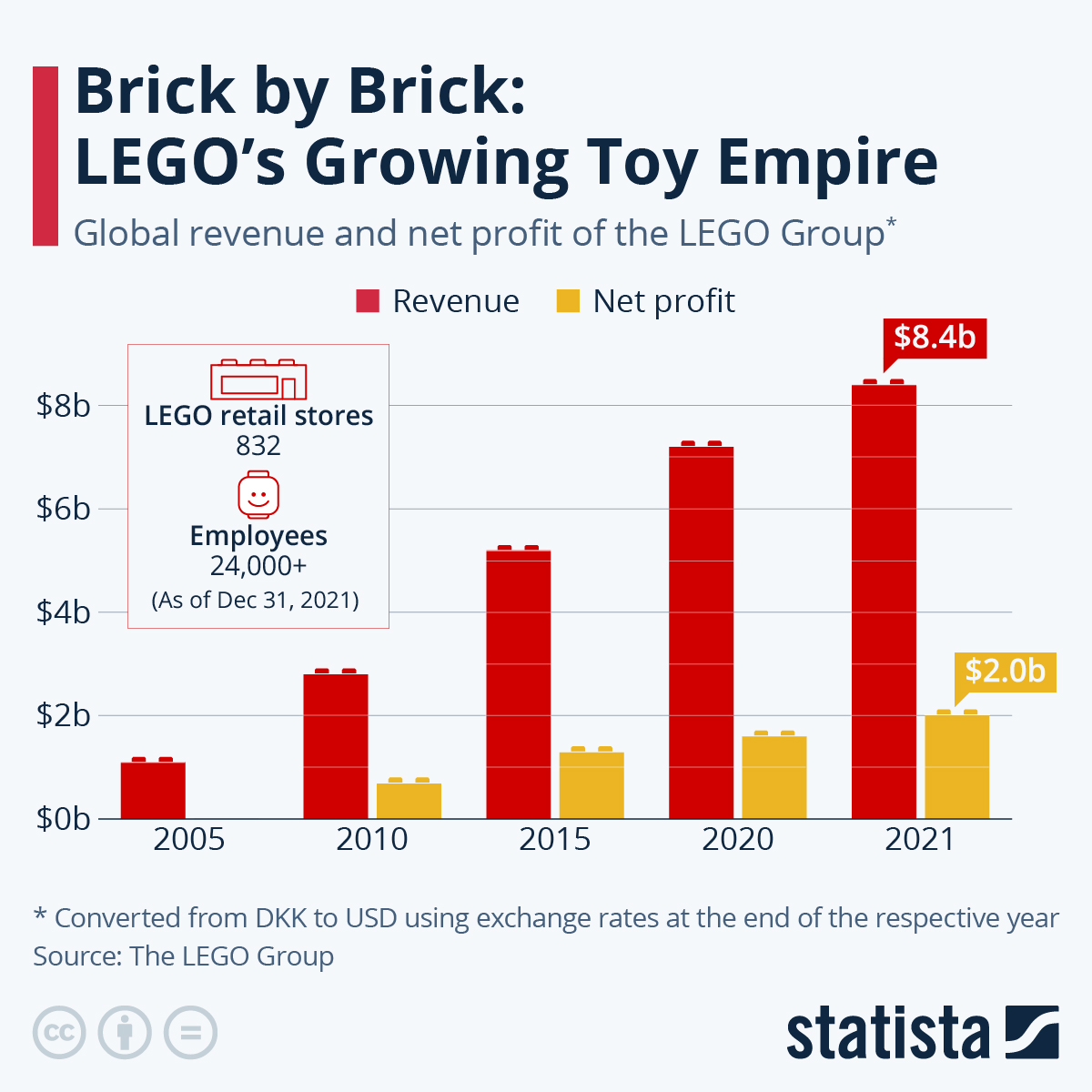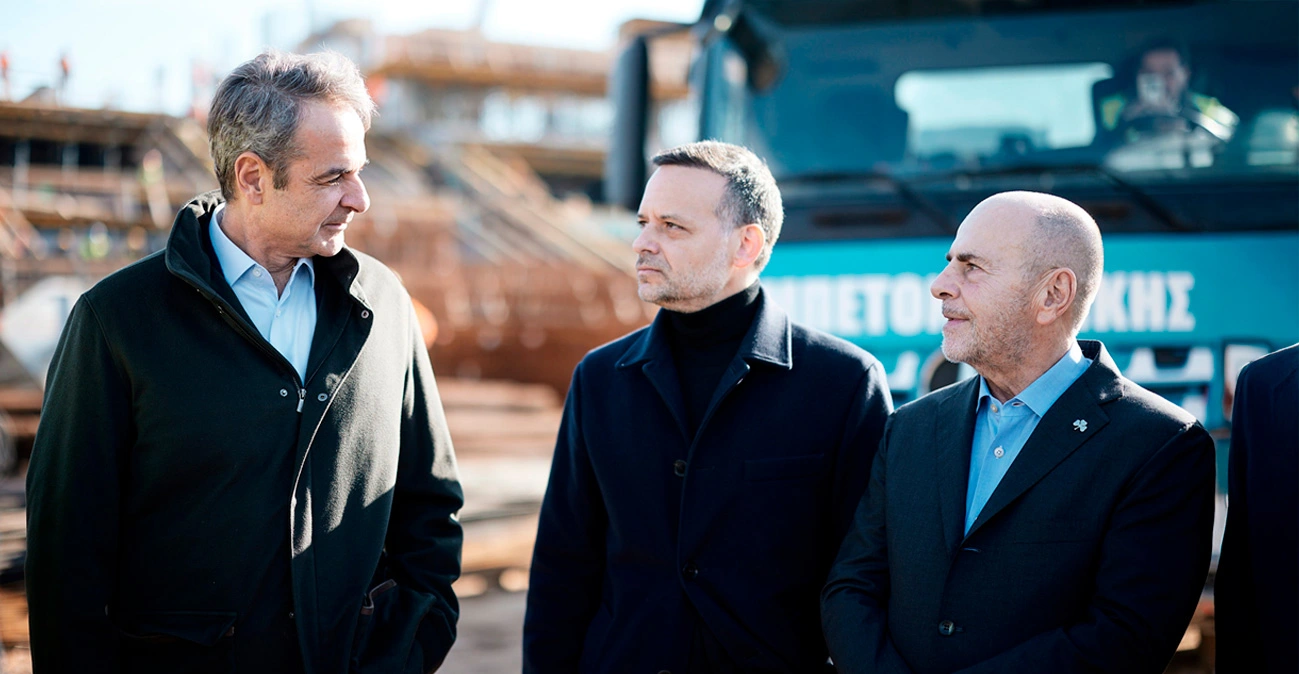90 years ago a Danish carpenter named Ole Kirk Kristiansen started a company making wooden toys. Renamed LEGO (a combination of the Danish words “Leg Godt”, i.e. “Play Well”) in 1935, the company soon started grappling with plastic bricks, laying the groundwork for the toy company we all know today. In 1958, Godtfred Kirk Christiansen, Ole’s son, submitted a patent application for a “toy building element” using the iconic studs and tubes that would eventually turn hundreds of millions of children around the world into budding architects.
The day of the patent application, January 28, marks International Lego Day in celebration of a toy that has bridged generations, sparking creativity in kids and adults alike. With theme parks and movies dedicated to the colorful building blocks and minifigures, LEGO has long evolved into a cultural phenomenon, turning the LEGO Group into one of the largest toy companies in the world.
As the following chart shows, the LEGO Group’s revenue has grown almost sevenfold over the past two decades, reaching $8.4 billion in 2021. The company employs more than 24,000 people worldwide and operates more than 800 LEGO stores as well as several Legoland theme parks. The “toy building element” business has also proven largely immune to the Covid-19 pandemic. In each of the past two years, the Billund-based LEGO Group achieved double-digit sales and profit growth.
You will find more infographics at Statista
Ask me anything
Explore related questions






